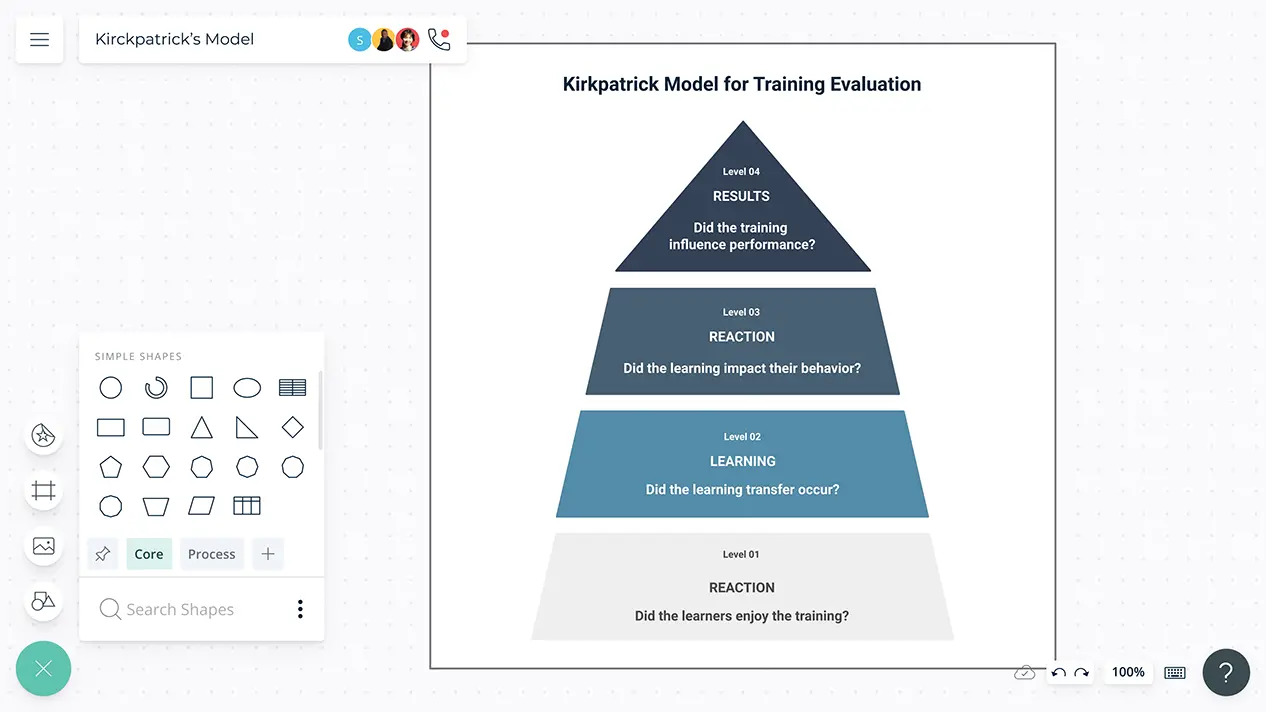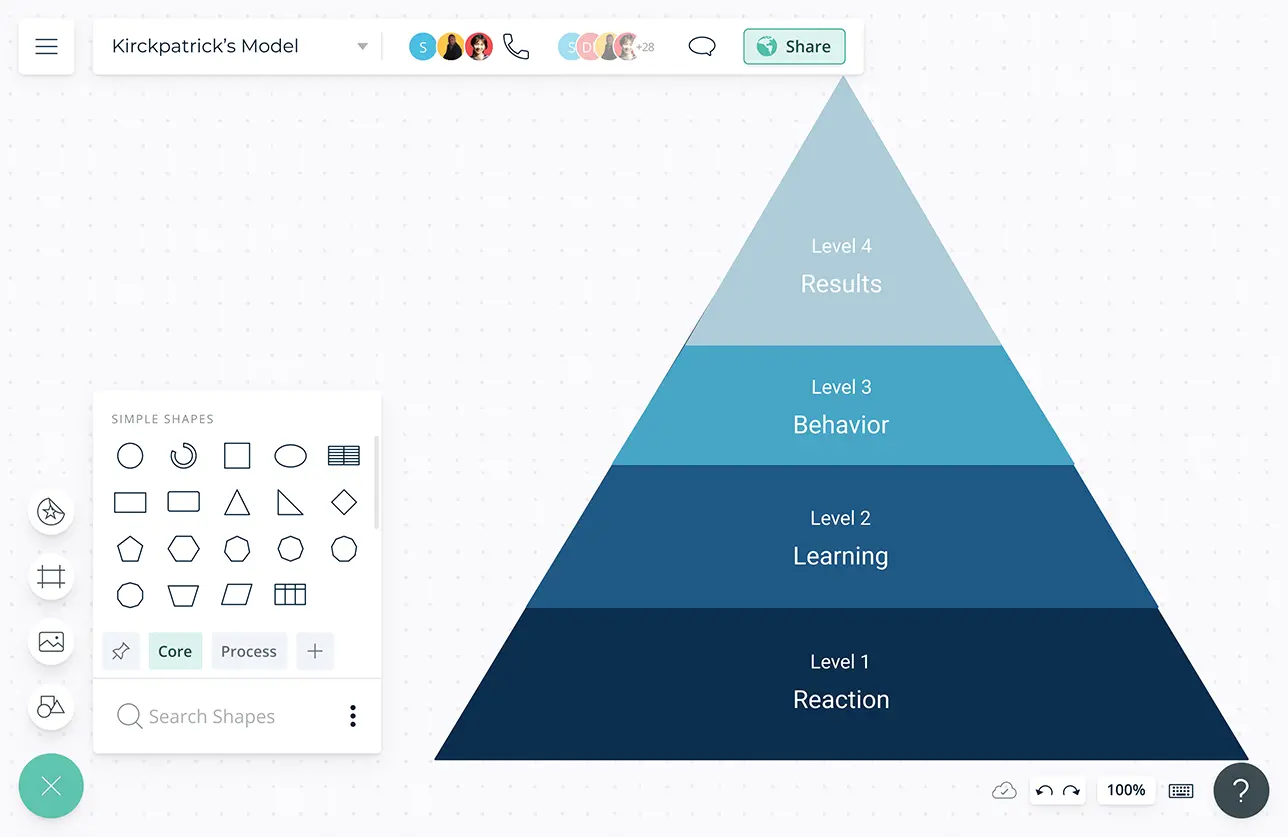Kirkpatrick Model
Analyze Effectiveness of Training Programs
Evaluate organizational training programs and take measures to improve them.
- Multiple templates to evaluate training programs & instructional design initiatives
- Real-time collaboration to work with training participants and gather their feedback
- Advanced visual tools to develop effective learning materials for training programs

- Multiple templates to evaluate training programs & instructional design initiatives
- Real-time collaboration to work with training participants and gather their feedback
- Advanced visual tools to develop effective learning materials for training programs


Discover Insights Faster

Migrate any type of data on your company’s training programs to visualize on the canvas for easier analysis.
Import reports, screenshots, and images, and attach key documents with in-app previews to centralize all information and assets needed to improve training.
Built-in brainstorming tools such as mind maps and post-it note walls to capture, group, and analyze ideas and devise training modules.
Add detailed docs, attachments, links and more via the notes feature on resources to capture their competitive implications and possible potential for improvements.
Streamline Your Training Programs

Multiple Kirkpatrick Model templates and frameworks to jump start your training process.
Powerful diagramming capabilities to transform your insights into actionable plans and break them into manageable goals.
Simple drag and drop tools to create dynamic presentations, dashboards, reports, and scorecards to train employees.


Collaborate in Real-Time, Anytime, Anywhere

Real-time cursors for any number of participants to collaborate with team members on a shared canvas.
Video conferencing baked into the platform to feel like you are in the same room even when you are working remotely.
Comment with context, have discussions and follow ups on the same canvas. Async!
Full version history to keep track of key points during each iteration of your process. Branch out from an earlier version if needed at any time.
Multiple access levels and roles to streamline managing, sharing, editing, and reviewing your strategy plans.
Build Comprehensive Kirkpatrick Models

Add detailed docs, attachments, links and more with notes to capture the big picture in a single space.
Link between shapes to build navigational structures in and across workspaces. Connect multiple training programs together and keep track of inconsistencies.
Connect to your favorite tools with Creately plugins for Slack, Google Workspace, Confluence, and more.

What Is the Kirkpatrick Model?
The Kirkpatrick model is used to analyze the effectiveness of employee training programs, measure how well the trainees have learned, and improve their training in the future. The Kirkpatrick model of training evaluation was first introduced by Donald Kirkpatrick in 1959, and was updated in 1975 and in 1993 by his son James. Later in 2016, James and his wife introduced the “New World Kirkpatrick Model” in their book, “Four Levels of Training Evaluation” after revising the original theory with an emphasis on the importance of making training relevant to the daily jobs of employees. The model consists of four levels; Reaction, Learning, Behavior, and Results. Each level progressively informs how successful a training program has been.
How to Create a Kirkpatrick Model?
- Reaction: At this level, the response of the learners is evaluated. This helps identify whether the training provided was engaging and relevant to the jobs they are doing. You can gather their feedback through surveys or interviews. Based on their reactions, you can make improvements to the future iterations of the program.
- Learning: This is where you measure how successfully the participants have learnt. This helps identify how the training has helped them develop their knowledge, skills, attitudes, confidence, and commitment. To successfully measure this, you can test your employees against the learning objectives of the program before and after the training. You can also measure their learning with verbal assessments and interviews.
- Behavior: Here you evaluate how the training has influenced the behavior of the participants and how they are applying their newfound knowledge to do their jobs. You can conduct interviews or observations to measure the behavior. Also create opportunities where the participants can effectively apply what they have learned and encourage and reward these positive changes in behavior.
- Results: Analyze the impact the training program and the changes in behavior has on your overall business and whether it has brought on a good return on investment. While this step is more time-consuming and costly than the others, you can conduct short-term observations and evaluations to identify whether the training program has made worthwhile improvements to the performance of the team.
